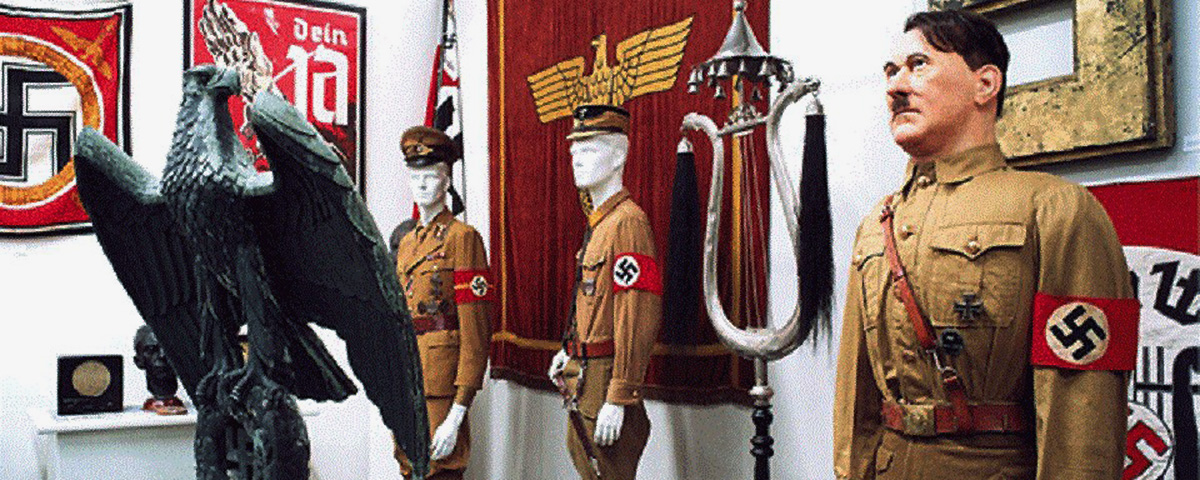International Museum of World War II
8 Mercer Road
Natick, Massachusetts 01760
Admission: $25.
In an exhibit case in the International Museum of World War II, a book lies open to a photograph of Adolf Hitler addressing troops in Nuremberg’s Luitpold Arena. A huge swastika adorns his speaker’s stand; a bronze eagle, the symbol of the Nazi Party, looms in the background. The haunting image lingers—until you turn the corner and encounter the actual swastika and eagle in the photo, both of which General George S. Patton’s troops brought home in 1945. A more direct and chilling example of material provenance would be difficult to find.
No other World War II museum captures the feel of the war quite like this remarkable facility in Natick, Massachusetts, just a few miles west of Boston. “One of the hallmarks of this museum is that war is personal,” says Kenneth Rendell, its founder and director. “It’s not what you see on the History Channel.” Indeed, its stunning collection has been described by the Imperial War Museum in London as “the most comprehensive display of original World War II artifacts on display anywhere.”
The artifacts include weapons, uniforms, maps (including what may be the only complete set of Normandy invasion plans), propaganda posters, and ephemera of all kinds. Visitors will find every type of Enigma machine, save one, and one of the few remaining Higgins boats in close to original condition. A battle-scarred Sherman tank dominates one of the galleries. A rare Link Trainer—a replicated airplane cockpit that in the early 1930s became the first effective flight simulator—shares space with an even rarer German-built “Goliath” explosives carrier. An extraordinary spread of French resistance gear sits a few feet from Patton’s battle helmet and Bernard Montgomery’s famed beret. Thanks to tight security and on-the-spot volunteers, visitors are even allowed to handle war relics such as an MP-44 German assault rifle, and a club with which Japanese guards once beat American POWs.
Presented virtually without exhibit text (audio Acoustiguides are available), the museum’s 7,500 artifacts portray the conflict in a uniquely raw way. One moment you read two letters, displayed side by side, that Dwight D. Eisenhower and Erwin Rommel wrote to their wives three days after D-Day; the next you marvel at a pair of straw boots worn by a Russian soldier at Stalingrad. The museum is proof that simple is sometimes best. A visitor need not be awash in special effects to appreciate a chess set carved from a loaf of bread by a Jewish concentration camp prisoner.
But simple does not mean simplistic; gallery design is subtle but deliberate. The mood produced by a combination of Waffen SS recruitment posters, cramped spacing, and German-annotated maps of occupied Paris, for instance, is unmistakable. “I don’t want to lose sight of the terror part while we’re telling personal stories,” Rendell says, “because that’s what people felt—terror.”
Note: The International Museum of World War II is open to general visitors on a first-come, first-served basis on Saturdays from 9 a.m.to 4 p.m. All visitors are required to provide a signed waiver of liability. Special admission: World War II veterans, free; seniors (65 and older), $20; under 18 years (with adult), $15. For details on scheduled visits for groups and other important information, please call the museum at (508) 651-1944, email visit@imwwii.org, or visit www.museumofworldwarii.org.





